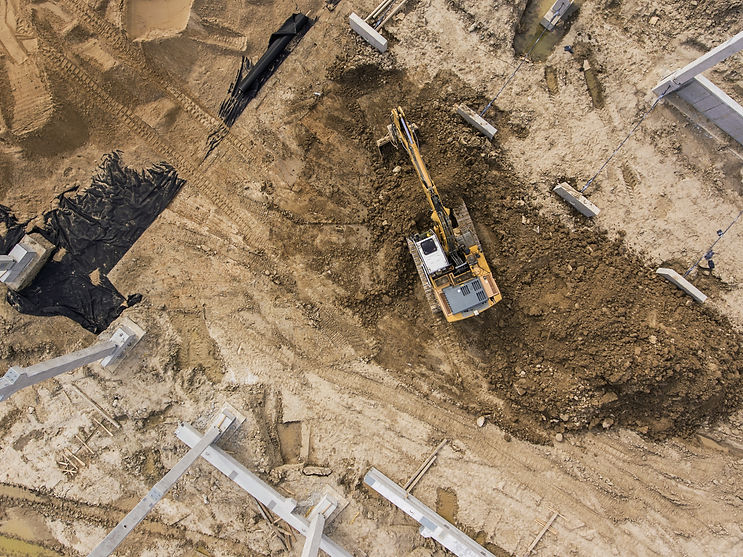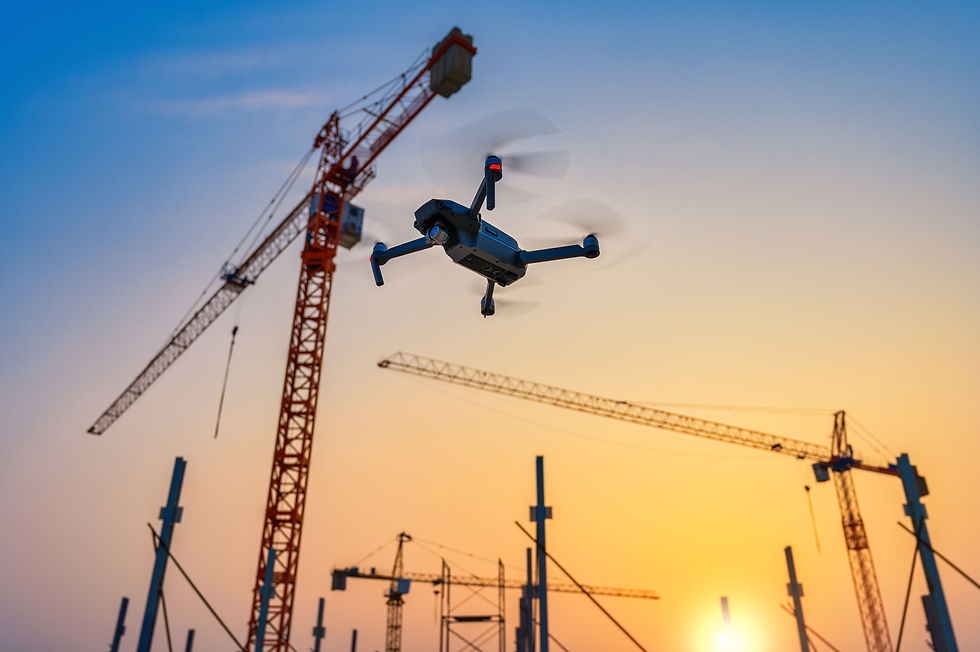
Construction
We make it easier for construction firms to scale across all their projects without being dependent on a few internal certified drone pilots.

We can provide a complete map of the site with GPS points, in 2D and 3D, allowing accurate measurements of distances, surfaces, elevations and volumes. This also provides all stakeholders an opportunity to compare updated designs to as built
conditions. This ensures that they are receiving the most up to date design and progress information thereby saving costs while staying on budget, reducing errors and minimizing delays. Photogrammetry software also generates elevation models such as digital terrain models (DTMs) and digital surface models (DSMs).
All this is accomplished while significantly reducing time-intensive manual data collection in the field. With easy and repeatable surveying, the site will have a more complete documentation, complete with history and progress. Data provided is clear, accurate and easily retrievable during the construction process. This allows stakeholders to review data directly on their computers, giving them a quick way to evaluate it and resolve any issues as if they were on site.

Digital Twins &
Building Information Modeling
A Digital Twin is the exact representation of a structure as digital data. It can help identify Issues and obstructions that needed to be faced during the construction process. Digital Twins can provide a constant comparison of the planned schedule and the actual progress reported. Engineers and architects can quickly understand the state of their site and, if necessary, address issues quickly. And since the model evolves over time, it can deliver more value with each new stage as it builds a historical database of the structure.
Drone technology can also be used to collect BIM (Building Information Modeling) data. BIM excels at collaboration and visualization during design and construction of a building. It can help identify anomalies that can be quickly addressed before they become problems. General contractors, construction managers, engineers, architects, subcontractors and investors (stakeholders) can use this information to track daily progress and make accurate decisions based on up-to-date data. Everyone can see for themselves what has already been done and what remains.
BIM and digital twins are at the core of building life cycle management. BIM makes building construction simpler, and digital twins make it easier to manage these complex spaces.